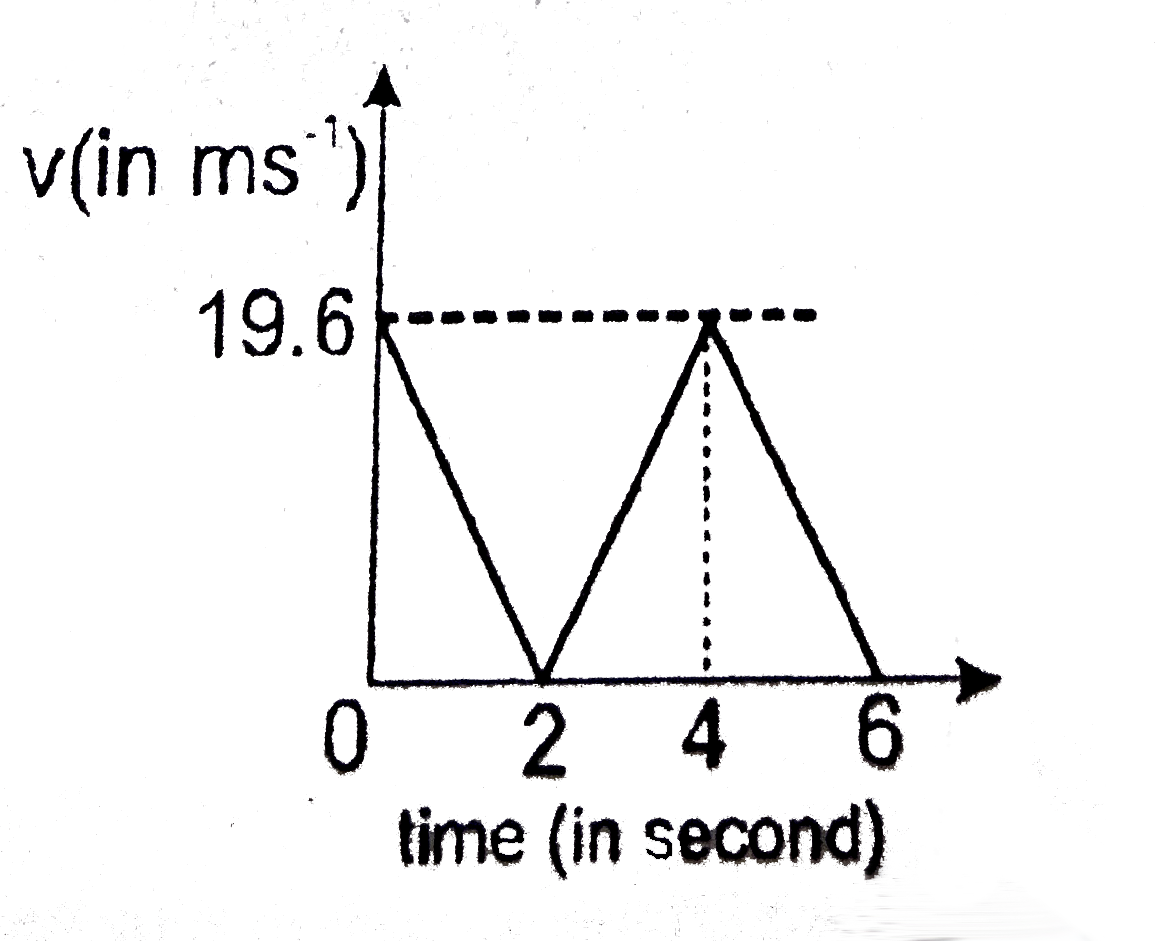The average velocity of a particle is equal to its instantaneous velocity. What is the shape of the displacement time graph?
To solve the question regarding the shape of the displacement-time graph when the average velocity of a particle is equal to its instantaneous velocity, we can follow these steps:
1. Understanding Average and Instantaneous Velocity:
- Average velocity is defined as the total displacement divided by the total time taken.
- Instantaneous velocity is the velocity of the particle at a specific moment in time.
2. Condition Given:
- The problem states that the average velocity is equal to the instantaneous velocity. This implies that the velocity of the particle does not change over time.
3. Implication of Constant Velocity:
- If the average velocity equals the instantaneous velocity at all times, it indicates that the particle is moving with a constant velocity. Therefore, there is no change in speed or direction.
4. Acceleration:
- Since the velocity is constant, the acceleration of the particle is zero. This means that the particle is not speeding up or slowing down.
5. Displacement Equation:
- We can use the equation of motion for uniform motion:
s=ut+12at2
- Here, s is the displacement, u is the initial velocity, a is the acceleration, and t is the time.
- Since the acceleration a=0, the equation simplifies to:
s=ut
- This indicates that displacement s is directly proportional to time t.
6. Graphical Representation:
- Since displacement s is directly proportional to time t, the displacement-time graph will be a straight line.
- The slope of this line represents the constant velocity of the particle.
Conclusion:
The shape of the displacement-time graph, when the average velocity is equal to the instantaneous velocity, is a straight line.
---
- Average velocity is defined as the total displacement divided by the total time taken.
- Instantaneous velocity is the velocity of the particle at a specific moment in time.
- The problem states that the average velocity is equal to the instantaneous velocity. This implies that the velocity of the particle does not change over time.
- If the average velocity equals the instantaneous velocity at all times, it indicates that the particle is moving with a constant velocity. Therefore, there is no change in speed or direction.
- Since the velocity is constant, the acceleration of the particle is zero. This means that the particle is not speeding up or slowing down.
- We can use the equation of motion for uniform motion:
s=ut+12at2
- Here, s is the displacement, u is the initial velocity, a is the acceleration, and t is the time.
- Since the acceleration a=0, the equation simplifies to:
s=ut
- This indicates that displacement s is directly proportional to time t.
- Since displacement s is directly proportional to time t, the displacement-time graph will be a straight line.
- The slope of this line represents the constant velocity of the particle.
The shape of the displacement-time graph, when the average velocity is equal to the instantaneous velocity, is a straight line.
Topper's Solved these Questions
- DYNAMICSBOOK - ICSECHAPTER - DYNAMICSEXERCISE - SELECTED PROBLEMS
249 Videos
- DYNAMICSBOOK - ICSECHAPTER - DYNAMICSEXERCISE - SHORT ANSWER QUESTIONS WITH ANSWERES
43 Videos
- DYNAMICSBOOK - ICSECHAPTER - DYNAMICSEXERCISE - SHORT ANSWER QUESTIONS
93 Videos
- DIMENSIONSBOOK - ICSECHAPTER - DIMENSIONSEXERCISE - SELECTED PROBLEMS (FROM CONVERSIONS OF ONE SYSTEMS OF UNITS INTO ANOTHER)
9 Videos
- FRICTIONBOOK - ICSECHAPTER - FRICTIONEXERCISE - Selected problems
30 Videos
Similar Questions
Statement I: The average velocity of the body may be equal to its instantaneous velocity.
Statement II: For a given time interval of a given motion, average veocity is single valued while average speed can have many values.
View SolutionAssertion: The average velocity of a particle is zero in a time interval. It is possible that the instantaneous acceleration is never zero in the interval.
Reason: The magnitude of average velocity in an interval is equal to its average speed in that interval.
View SolutionHow is average velocity different from instantaneous velocity ?
View SolutionExplain the terms , velocity and instantaneous velocity. When are they equal?
View SolutionThe velocity − time graph of a particle is as shown in figure

View SolutionThe instantaneous velocity of a particle is equal to time derivative of its position vector and the instantaneous acceleration is equal to time derivatives of its velocity vector. Therefore :
View SolutionAssertion: Average speed of a particle in a given time interval is never less than the magnitude of the average velocity.
Reason: The magnitude of the velocity (instantaneous velocity) of a particle is equal to its speed.
View SolutionWhen a particle moves with constant velocity its average velocity, its instantaneous velocity and its speed all are equal. Is this statement true or false ?
View SolutionAssertion: In successive time intervals if the average velocities of a particle are equal then the particle must be moving with constant velocity.
Reason: When a particle moves with uniform velocity, its displacement always increases with time.
View SolutionAssertion: When a particle moves with constant velocity its average velocity, its insttantaneous velocity and its speed are all equal in magnitude.
Reason: If the average velocity of a particle moving on a straight line is zero in a time interval, then it is possible that the instantaneous velocity is never zero in the internal.
View Solution
